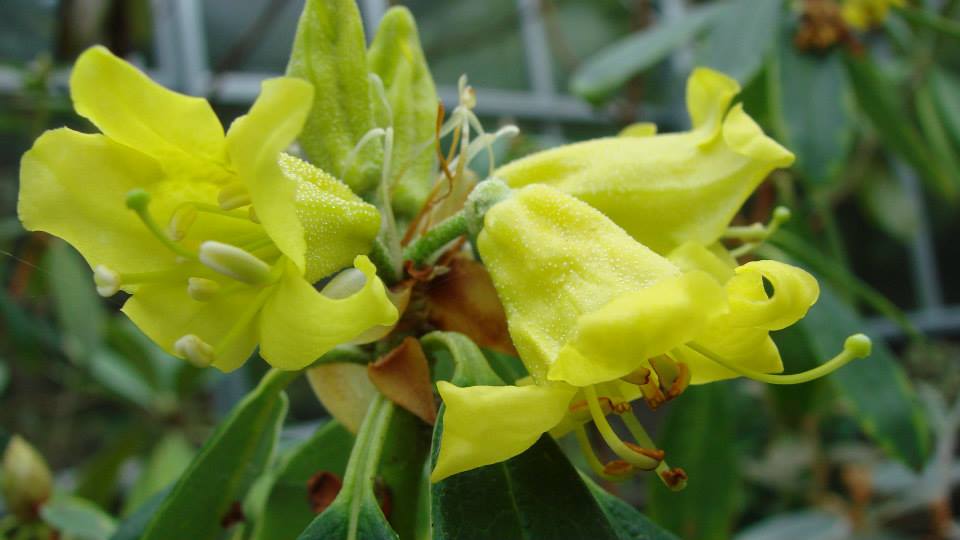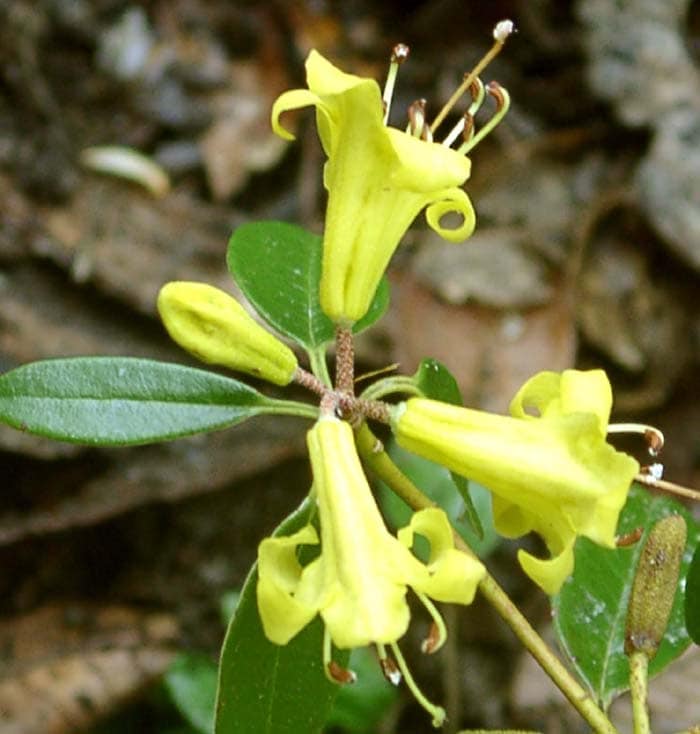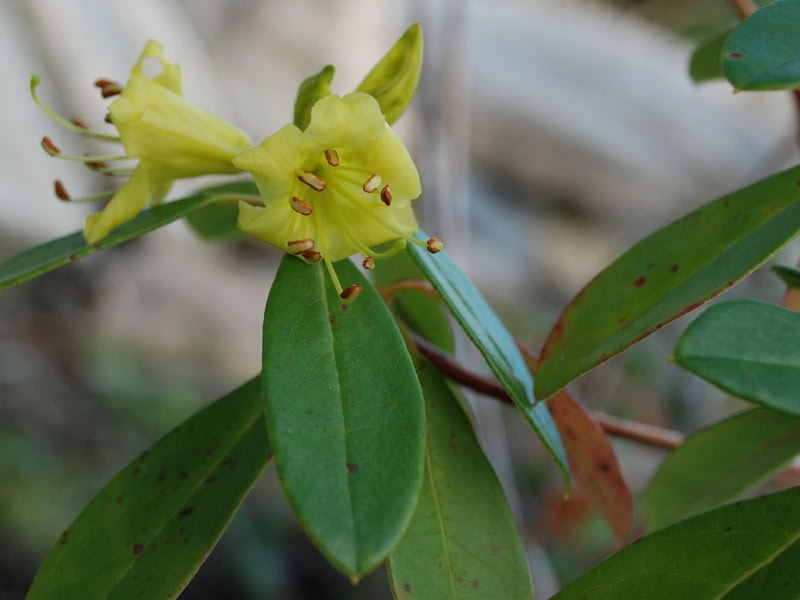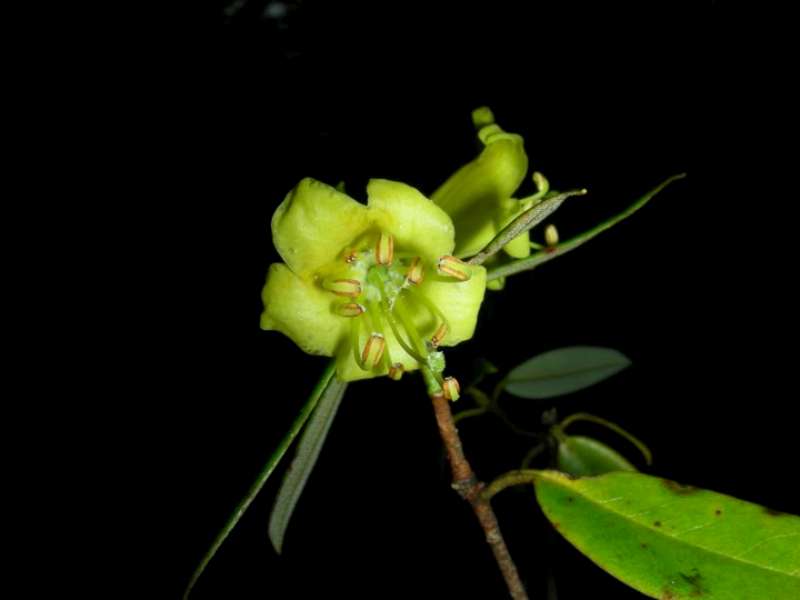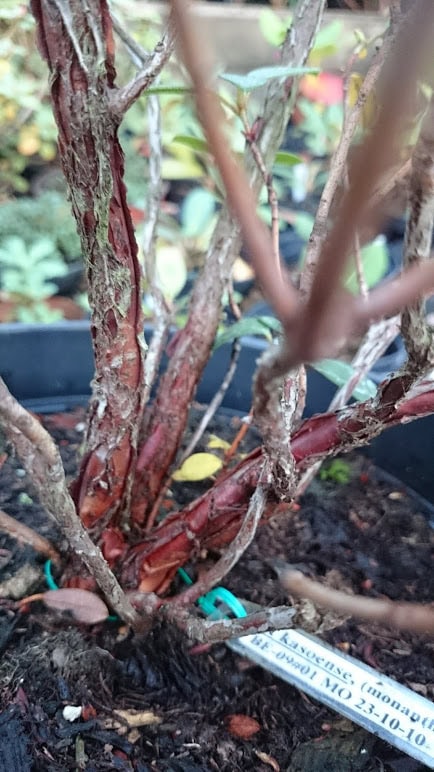Rhododendron kasoense
Billeder af Rhododendron kasoense
Beskrivelse
R. kasoense (Monantha). En ny introduceret art af K. Cox. Vist ikke hårdfør i Danmark?
Flora of China
RBGE Herbarium; R. kasoense
Scottish Plant Collectors
Scottish Plant Collectors discover 4 new species of rhododendron in never-explored part of North East India. Arunachal Pradesh on the India / Tibet border is one of the last unexplored regions on earth. Full of undiscovered plant treasures, it is the true Shangri-La for present day plant-hunters. Peter & Patricia Cox and Peter Hutchison, veteran Scottish plant-collectors last attempted to explore the Subansiri region of Arunachal Pradesh in 1965. Permits were obtained and all seemed well, but the 1962 Chinese invasion on Arunachal had left the Indians feeling very sensitive. The expedition was forced to turn back by the army, only allowed a tantalising glimpse of the riches of the region: 3 species of Rhododendron entirely new to science were discovered in the small area covered. How many more exciting plants could lie further into the mysterious mountains?
On 11th October 2002 Kenneth Cox, Peter Cox and Peter Hutchison and American explorer Kenneth Storm returned to Arunachal Pradesh to complete the 1966 expedition, crossing the mountain divide between the Subansiri and Siyom rivers, for the first time by non-Indians. The Tagin tribe who live in the mountains have long been feared as too volatile and warlike to let outsiders penetrate their world. It took several days negotiation to ensure safe passage and the villagers then expertly guided the explorers through the jungle terrain. The crossing of the range took 7 days of extreme hardship and considerable danger due to very steep terrain, cliffs and suspension bridges in poor states of repair. Two members of the expedition had to turn back, leaving the others to achieve the crossing.
‘It was the hardest but most rewarding of the over 15 expeditions I’ve been on’ said Peter Cox aged 68, ‘but I
think it’s time I retired from this: it was too hard.’
They managed to identify 40 species of rhododendron including 4 species completely new to science, and 2 further species never before introduced to the west one of which, R. kasoense, uniquely flowers in October. They also found numerous other interesting plants including a new species of Sorbus and a Primula, never introduced from the wild.
More information
More information on Arunachal Discoveries as several people have asked for more details.
The following species are completely new to Science and therefore are unnamed.
1. an evergreen azalea. None are reported from this area. This was a great surprise.
2. A species in subsection Falconera looks like R. protisum and sino falconeri with good indumentum
3. A species related to R. aperantum This was another really curious plant. Nothing quite like it.
4. A new species related to R. sanguineum or parmulatum.
5. A Maddenia or Tephropepla species. No idea what this could be.
Plus R. kasoense this is Autumn flowering with 4-5 yellow flowers. I can send scans if the one attatched to the e mail was not let through your system.
R. boothii both introduced for probably the first time. This is a bright yellow species suitable for west coast and mild gardens. It was in cultivation but seems to have been lost: we have not seen any correctly named plants for 30 years at least.

